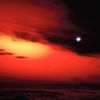-
 +17 +1
+17 +1Chernobyl's Air Is Now 47 Percent Less Radiated With Novel Technology
A novel technology by the Swiss company Exlterra could decontaminate Chernobyl's radioactivity in five years instead of 24 thousand.
-
 +12 +1
+12 +1Nuclear site reusable in '313 years' time'
The site of a Scottish nuclear power facility should be available for other uses in 313 years' time, according to a new report. Dounreay, near Thurso, was the UK site for the development of fast reactor research from 1955 to 1994. The facility on the north Caithness coast is in the process of being closed down, demolished and cleaned up. However, the Nuclear Decommissioning Authority said it would be 2333 before the 148-acre site is safe for reuse.
-
 +25 +1
+25 +1U.S. tests ways to sweep space clean of radiation after nuclear attack
The U.S. military thought it had cleared the decks when, on 9 July 1962, it heaved a 1.4-megaton nuclear bomb some 400 kilometers into space: Orbiting satellites were safely out of range of the blast. But in the months that followed the test, called Starfish Prime, satellites began to wink out one by one, including the world’s first communications satellite, Telstar. There was an unexpected aftereffect: High-energy electrons, shed by radioactive debris and trapped by Earth’s magnetic field, were fritzing out the satellites’ electronics and solar panels.
-
 +17 +1
+17 +1Radioactive chlorine from nuclear bomb tests still present in Antarctica
Antarctica's ice sheets are still releasing radioactive chlorine from marine nuclear weapons tests in the 1950s, a new study finds. This suggests regions in Antarctica store and vent the radioactive element differently than previously thought. The results also improve scientists' ability to use chlorine to learn more about Earth's atmosphere.
-
 +3 +1
+3 +1Wildlife now roam where US once forged its deadliest weapons
From a tiny Pacific island to a leafy Indiana forest, a handful of sites where the United States manufactured and tested some of the most lethal weapons known to humankind are now peaceful havens for wildlife.
-
 +26 +1
+26 +1Radioactive materials involved in deadly blast, Russia confirms
A mystery explosion at a Russian weapons testing range involved radioactive materials, authorities admitted on Saturday, as the blast's death toll rose and signs of a creeping radiation emergency, or at the least fear of one, grew harder to mask.
-
 +11 +1
+11 +1This new vodka is produced in Chernobyl
The first product ever made there in 33 years.
-
 +32 +1
+32 +1A Dead Man Was Cremated in Arizona, But Nobody Knew He Was Radioactive
In 2017, a 69-year-old man with pancreatic cancer went to hospital with abnormally low blood pressure. Sadly, he died only two days later, and his remains were cremated.
-
 +7 +1
+7 +1Norway finds big radiation leak from Russian sub
Experts say there is no alarm, despite a high level of caesium at a Soviet-era submarine wreck.
-
 +16 +1
+16 +1How The Chernobyl Nuclear Plant Meltdown Formed World's Most Dangerous Lava Flow
In April 1986, Reactor 4 of the Wladimir Iljitsch Lenin Atomic Power Station near the city of Chernobyl experiences a catastrophic core meltdown. The radioactive lava that formed was named Corium and it's still there.
-
 +27 +1
+27 +1New way to protect against high-dose radiation damage discovered
Intensive radiotherapy can be toxic in 60 percent of patients with tumors located in the gastrointestinal cavity. Increases in levels of the protein URI protect mice against high-dose ionizing radiation-induced gastrointestinal syndrome and enhance mouse intestinal regeneration and survival in 100 percent of the cases. This finding could be useful to mitigate side effects of other sources of intensive radiation, such as nuclear accidents, nuclear warfare or the exposure to cosmic radiation during space explorations.
-
 +19 +1
+19 +1A Chernobyl 'suicide squad' of volunteers helped save Europe — here's their amazing true story
Less than two weeks after the infamous reactor meltdown at Chernobyl, officials decided to risk the lives of three men to potentially save millions of lives. A larger disaster could have spread radioactive fallout across Europe.
-
 +16 +1
+16 +1Chernobyl: How bad was it?
Not long after midnight on April 26, 1986, the world’s worst nuclear power accident began. Workers were conducting a test at the Chernobyl Nuclear Power Plant in the Ukraine when their operations spun out of control. Unthinkably, the core of the plant’s reactor No. 4 exploded, first blowing off its giant concrete lid, then letting a massive stream of radiation into the air.
-
 +3 +1
+3 +1This 17 Y.O. Boy Scout Built A Nuclear Reactor In His Mom’s Backyard 20 Years Ago That Made The Neighborhood Radioactive | Positive Ray
The story of David Charles Hahn (1976-2016) is not an ordinary one. The boy, since his early years, was always fascinated with chemistry and science and conducted numerous chemical experiments just for fun. However, no one really expected that one day he would actually build a fully functioning nuclear reactor in his own backyard.
-
 +3 +1
+3 +1Russian Scientists Discover Bacteria That Neutralizes Nuclear Waste
The unique bacteria, discovered in a nuclear waste storage site in Siberia, shows promise as a tool for the creation of a natural barrier to the spread of radionuclides.
-
 +16 +1
+16 +1Japan Acknowledges First Radiation Death Among Fukushima Plant Workers
Japan has acknowledged for the first time that a worker at the Fukushima nuclear power plant, destroyed by an earthquake and tsunami more than seven years ago, died from radiation exposure. A 9.0 magnitude earthquake struck in March 2011, triggering a tsunami that killed some 18,000 people and the world's worst nuclear disaster since Chernobyl 25 years earlier.
-
 +18 +1
+18 +1Tepco halts sales of souvenirs from Fukushima No. 1 nuclear plant following public outcry
Tepco suspended the sale of souvenirs at its crippled Fukushima No. 1 nuclear power plant Wednesday — just eight days after launching the products — following public outcry that it was looking to profit from the 2011 disaster. Tokyo Electric Power Company Holdings Inc. had been selling plastic file folders imprinted with pictures of the Nos. 1 to 4 units at the crisis-hit plant at two of the facility’s convenience stores since Aug. 1, after receiving requests for memorabilia from visitors and workers.
-
 +25 +1
+25 +1Chernobyl's Radioactive 'Wildlife Preserve' Spawns Growing Wolf Population
Gray wolves from the radioactive forbidden zone around the nuclear disaster site of Chernobyl are now roaming out into the rest of the world, raising the possibility they'll spread mutant genes that they may carryfar and wide, a new study finds. The wolves are prospering not due to any mutant superpower, but because the radioactive zone now acts like a wildlife preserve, researchers added.
-
 +9 +1
+9 +1US college loses weapons-grade plutonium
A US university faces a fine of $8,500 (£6,280) for apparently losing a small amount of weapons-grade plutonium. The US Nuclear Regulatory Commission (NRC) said Idaho State University is unable to account for 1 gram (0.03oz) of the material. The plutonium is used in reactors and to make nuclear bombs but the NRC says the amount missing is too small to make a nuclear weapon.
-
 +2 +1
+2 +1Vietnamese trainee made to do decontamination work in Fukushima
A Vietnamese man who came to Japan under a foreign trainee program was made to engage in radioactive decontamination work in Fukushima Prefecture without his knowledge, a foreign workers support group heard Wednesday. At an event organized by the Solidarity Network with Migrants Japan, the 24-year-old man, who declined to be named, said he would have "never come to Japan" if he had known he would be doing that work near where a nuclear disaster occurred in 2011.
Submit a link
Start a discussion




















